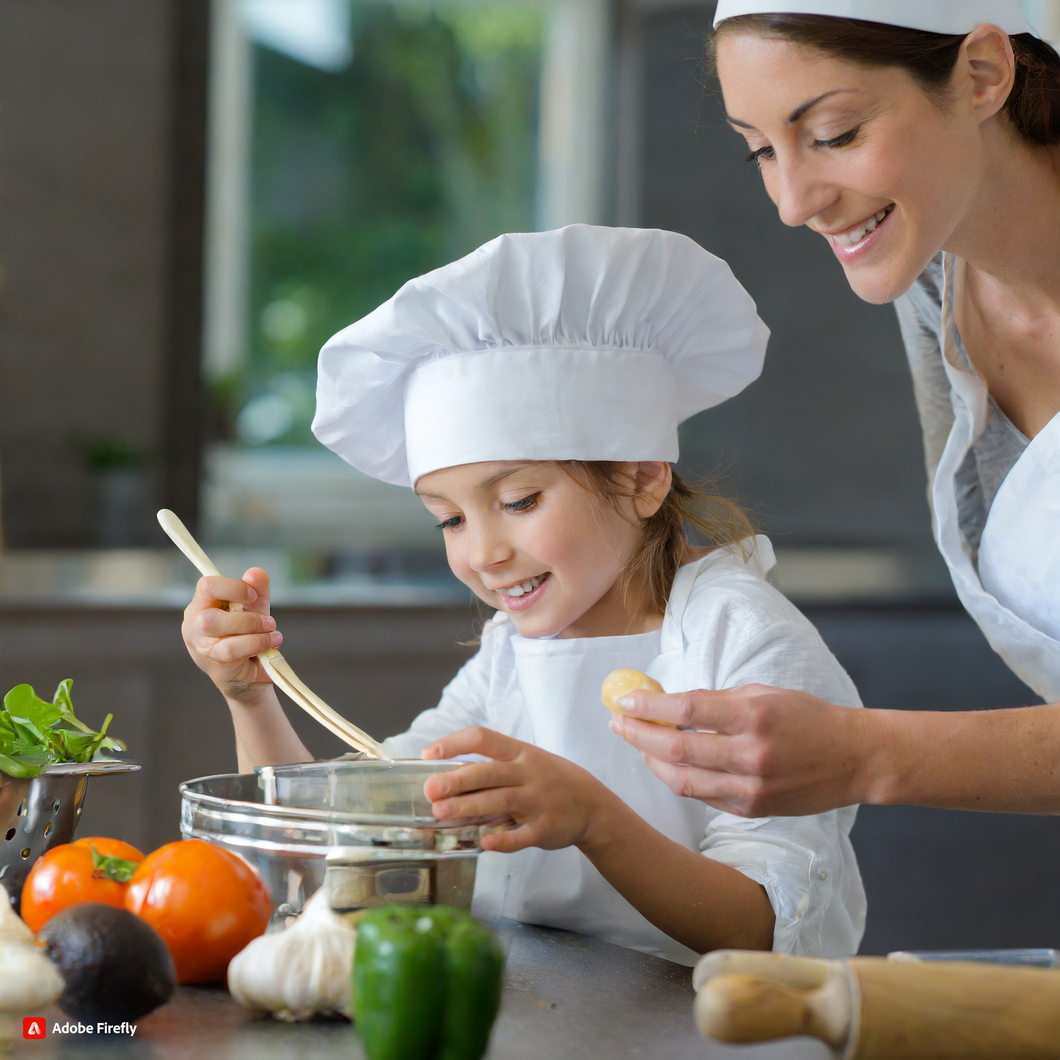Introduction
Culinary arts is the art of preparing and cooking food, and it has been an integral part of human culture for centuries. However, the true secrets of Flavorful Cooking have only recently been discovered and explored. With advancements in technology and a deeper understanding of ingredients and techniques, chefs and home cooks alike are constantly discovering new ways to elevate their dishes and create unforgettable flavors. In this introduction, we will delve into the world of culinary arts and uncover the secrets of Flavorful Cooking that have been passed down through generations and continue to evolve with each new discovery.
5 Essential Spices for Elevating Flavorful Cooking
Are you tired of bland and boring meals? Do you want to take your cooking to the next level and impress your family and friends with delicious and flavorful dishes? Look no further, because in this article, we will be revealing the secrets of Flavorful Cooking through the use of essential spices.

Spices have been used in cooking for centuries, not only for their flavor but also for their medicinal properties. They add depth, complexity, and aroma to dishes, making them more enticing and satisfying. With the right combination of spices, you can transform a simple dish into a culinary masterpiece.
So, without further ado, let’s dive into the 5 essential spices that will elevate your cooking and take it to new heights.
1. Cumin
Cumin is a staple in many cuisines, including Indian, Mexican, and Middle Eastern. It has a warm, earthy, and slightly nutty flavor that adds depth and richness to dishes. Cumin is often used in spice blends such as garam masala and chili powder, but it can also be used on its own to season meats, vegetables, and soups.
To bring out the full flavor of cumin, it is best to toast the seeds before using them. Simply heat a dry pan over medium heat and add the cumin seeds. Toast them for a few minutes until they become fragrant, then grind them using a mortar and pestle or a spice grinder. This will release the essential oils and intensify the flavor of the cumin.
2. Paprika
Paprika is a spice made from dried and ground red peppers. It is commonly used in Hungarian and Spanish cuisine, but it can also be found in dishes from all over the world. Paprika adds a sweet and smoky flavor to dishes, making it a versatile spice that can be used in both savory and sweet dishes.
There are different types of paprika, including sweet, hot, and smoked. Sweet paprika is the most commonly used and has a mild flavor, while hot paprika adds a spicy kick to dishes. Smoked paprika, also known as pimentón, has a deep and smoky flavor that is perfect for adding a BBQ-like taste to meats and vegetables.
3. Turmeric
Turmeric is a bright yellow spice that is widely used in Indian and Southeast Asian cuisine. It has a warm and slightly bitter flavor, and it is known for its anti-inflammatory and antioxidant properties. Turmeric is often used in curries, but it can also be added to rice, soups, and stews for a vibrant color and flavor.
When using turmeric, it is important to be careful as it can stain surfaces and clothes. To avoid this, you can mix it with a little bit of oil or water before adding it to your dish. This will also help to release the flavor of the turmeric and make it more potent.
4. Cinnamon
Cinnamon is a spice that is commonly associated with sweet dishes, but it can also be used in savory dishes to add warmth and depth. It is made from the inner bark of the cinnamon tree and has a sweet and woody flavor. Cinnamon is often used in baking, but it can also be added to stews, curries, and even coffee for a unique twist.
To get the most flavor out of cinnamon, it is best to use whole cinnamon sticks and grind them yourself. This will ensure that the spice is fresh and potent. You can also infuse cinnamon sticks in hot liquids, such as milk or tea, to extract the flavor and aroma.
5. Ginger
Ginger is a root that is widely used in Asian and Indian cuisine. It has a spicy and slightly sweet flavor that adds a zing to dishes. Ginger is often used in stir-fries, curries, and marinades, but it can also be added to baked goods and drinks for a unique flavor.
To use ginger, you can either grate it or slice it thinly. Grated ginger is perfect for adding to sauces and marinades, while sliced ginger can be added to stir-fries and soups. You can also infuse ginger in hot water to make a soothing and refreshing tea.
In conclusion, these 5 essential spices are a must-have in any kitchen. They will not only add flavor to your dishes but also provide numerous health benefits. So, next time you’re in the kitchen, don’t be afraid to experiment with these spices and take your cooking to new heights. Your taste buds will thank you!
Exploring Umami: The Fifth Taste in Flavorful Cooking
Have you ever tasted a dish that left you wanting more, even though you were already full? Or have you ever wondered why certain foods just seem to have a depth of flavor that others lack? The answer may lie in the concept of umami, the fifth taste in culinary arts.
Umami, which translates to “pleasant savory taste” in Japanese, was first identified by a Japanese chemist, Kikunae Ikeda, in 1908. It is often described as a savory, meaty, or brothy taste that adds depth and complexity to dishes. While the four basic tastes – sweet, sour, salty, and bitter – have been known for centuries, umami has only recently gained recognition in the culinary world.

So, what exactly is umami and how does it enhance the flavor of food? Umami is a taste that is created by the presence of glutamate, an amino acid found in many foods. It is also enhanced by the presence of inosinate and guanylate, two other compounds that are commonly found in foods. These compounds work together to create a taste that is both savory and satisfying.
One of the most common sources of umami is monosodium glutamate (MSG), a flavor enhancer that is often used in Asian cuisine. However, MSG has received a lot of negative attention in recent years, with claims that it can cause adverse reactions in some people. As a result, many chefs and home cooks have turned to natural sources of umami to enhance the flavor of their dishes.
Some of the most common natural sources of umami include tomatoes, mushrooms, soy sauce, Parmesan cheese, and anchovies. These ingredients are often used in combination to create a depth of flavor that is both complex and satisfying. For example, a classic Italian dish like spaghetti Bolognese combines the umami-rich ingredients of tomatoes, Parmesan cheese, and anchovies to create a rich and flavorful sauce.
But umami is not just limited to savory dishes. It can also be found in certain fruits and vegetables, such as ripe tomatoes, asparagus, and carrots. These ingredients may not have a strong savory taste on their own, but when combined with other umami-rich ingredients, they can add a subtle depth of flavor to dishes.
So, how can you incorporate umami into your cooking? One way is to use umami-rich ingredients in your dishes. For example, instead of using regular salt, try using soy sauce or fish sauce to season your dishes. You can also experiment with different combinations of ingredients to create a balance of umami flavors. For example, adding a splash of balsamic vinegar to a tomato-based dish can enhance the umami taste.
Another way to enhance umami in your cooking is by using cooking techniques that bring out the natural umami in ingredients. For example, roasting or grilling vegetables can intensify their umami flavor. Slow cooking meats can also bring out their natural umami, making them more tender and flavorful.
Incorporating umami into your cooking can take your dishes to the next level. It adds a depth of flavor that is both satisfying and complex. So, the next time you’re in the kitchen, don’t forget to explore the fifth taste and discover the secrets of Flavorful Cooking with umami. Your taste buds will thank you.
Mastering the Art of Balancing Flavors in Your Cooking
Are you tired of your meals tasting bland and boring? Do you want to take your cooking to the next level and impress your family and friends with delicious and flavorful dishes? Look no further, because in this article, we will be exploring the secrets of mastering the art of balancing flavors in your cooking.
Flavor is the most important aspect of any dish. It is what makes our taste buds dance and our mouths water. But achieving the perfect balance of flavors can be a daunting task, especially for beginner cooks. However, with a few tips and tricks, you can elevate your cooking and create dishes that are bursting with flavor.

The first step to mastering the art of balancing flavors is understanding the five basic tastes: sweet, sour, salty, bitter, and umami. These tastes are the building blocks of flavor and can be found in almost every dish. Sweetness comes from sugar and other natural sweeteners, while sourness comes from acidic ingredients like lemon juice or vinegar. Saltiness is derived from salt, and bitterness can be found in ingredients like coffee or dark chocolate. Umami, also known as the fifth taste, is a savory flavor that can be found in ingredients like soy sauce and mushrooms.
Now that we have a basic understanding of the five tastes, let’s dive into the secrets of balancing them in your cooking. The first secret is to start with a good base. This means using quality ingredients and building layers of flavor. For example, if you are making a tomato sauce, start by sautéing onions and garlic in olive oil before adding in the tomatoes. This will create a flavorful base for your sauce.
The second secret is to use the right amount of each taste. Too much of one taste can overpower the others and throw off the balance. For example, if you add too much salt to a dish, it will taste overly salty and mask the other flavors. It’s important to taste as you go and adjust the amounts of each taste accordingly.
The third secret is to use complementary flavors. This means pairing flavors that work well together. For example, sweet and sour flavors complement each other, as do salty and umami flavors. Experiment with different combinations to find what works best for your taste buds.
Another important aspect of balancing flavors is understanding the role of herbs and spices. These ingredients not only add flavor but also enhance and balance the other tastes in a dish. For example, adding a pinch of sugar to a tomato-based dish can help balance out the acidity. Similarly, adding a dash of salt to a sweet dish can enhance the sweetness.
One of the most important secrets to balancing flavors is to never underestimate the power of acidity. Acidity can brighten and balance flavors in a dish. A squeeze of lemon juice or a splash of vinegar can make all the difference in a dish that tastes flat.
Lastly, don’t be afraid to experiment and trust your taste buds. Every person’s palate is different, so what may be balanced for one person may not be for another. Taste as you go and adjust accordingly. And remember, practice makes perfect. The more you cook and experiment with flavors, the better you will become at balancing them. Read easy Healthy Lunch for Weight Loss.
In conclusion, mastering the art of balancing flavors in your cooking is all about understanding the five basic tastes, using the right amount of each taste, and experimenting with complementary flavors. With these secrets in mind, you can elevate your cooking and create dishes that are not only delicious but also perfectly balanced in flavor. So go ahead and unleash your inner chef, and let your taste buds be your guide. Happy cooking!
Q&A – Flavorful Cooking
Q: What is culinary arts?
A: Culinary arts is the art and science of preparing and cooking food. It involves a variety of techniques, ingredients, and flavors to create delicious and visually appealing dishes.
Q: What are some secrets to Flavorful Cooking?
A: Some secrets to Flavorful Cooking include using fresh and high-quality ingredients, balancing flavors with herbs and spices, and properly seasoning and cooking food to enhance its natural flavors.
Q: How can one discover the world of culinary arts?
A: One can discover the world of culinary arts by taking cooking classes, experimenting with different recipes and techniques, and exploring different cuisines and cultures. Reading cookbooks and watching cooking shows can also help in learning about culinary arts.
Conclusion for Flavorful Cooking
In conclusion for Flavorful Cooking, discovering culinary arts and the secrets of Flavorful Cooking is a journey that requires passion, dedication, and a willingness to constantly learn and experiment. It involves understanding the science behind flavors, techniques, and ingredients, as well as developing a keen palate and creativity in the kitchen. With the right knowledge and skills, anyone can elevate their cooking and create delicious and memorable dishes. So, whether you are a professional chef or a home cook, never stop exploring and discovering the endless possibilities of culinary arts.
Please follow us on linkedin. You can learn all best canadian food recipes you can check our Culinary 1TouchFood Youtube and Telegram 1TouchFood page. Don’t forget Fighting Obesity Magazine and Radio Cooking.

